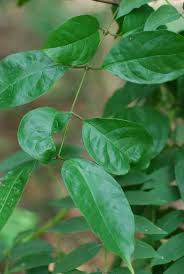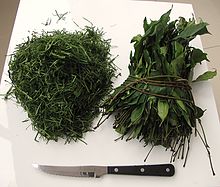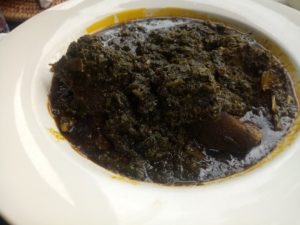
Why should you add Afang leaves to the list of vegetables that you eat? I will tell you but first let me introduce the vegetable to those who do not know it.
Know Your Foods
The Afang leaves is indigenous to Africa. It’s a popular vine that grows in the South of Nigeria and found easily in the market places. You can also find it in tropical rainforests of Cameroon, Gabon, Democratic Republic of Congo (DRC) and Angola.
In DRC it is called Mfumbwa, Longongia or Banvale depending on the local language. In Central African Republic, Gabon, Congo, Angola and even some parts of DRC, it is called Koko.
The leaves of the vine is simple known as Afang to the Efik/Ibibio people of Nigeria. Another common Nigerian name for Afang is Okazi.
Interestingly, there are two common species of Afang – Gnetum africanum and Gnetum bucholzianum. Both species are found in all the countries mentioned and it is hard to distinguish the two. For the Gnetum Africanum, there are about 5 varieties – Asutan, Oron, Ikom, Welw and Koko.
The leaves are evergreen and can be harvested all year round. It is interesting to note that Cameroon exports Afang leaves to Nigeria, Gabon and Congo.

Apart from the leaves of the vine, the seeds are also eaten.
Nutrition

Afang has a rich fibre content (28-37% of the leaves) and appreciable protein content (13-18%). Mineral content is also high (2-9%). Like most plant proteins, Protein in Afang is not complete but it contains many essential amino acids such as Isoleucine, leucine, lysine, methionine, phenylalanine, threonine, tryptophan and valine. It also contains an array of non-essential amino acids. Combining Afang with other food groups with better protein profile (such as dried shrimps, beef and complementary plant proteins) will increase protein content and make it more available for use by the body.
The very green leaves have high levels of carotenoids and sterols which act as antioxidants in the body. Afang leaves also have quite many phytochemicals like saponins and flavonoids that promote health. Saponins, in particular, help to reduce serum lipids and fight atherogenesis. It should be noted that some varieties have lower levels of saponins.
The mineral content of Afang leaves vary across the varieties. E.g. ikom variety has more calcium and iron than the others while Asutan has more magnesium and zinc that the others.

photo credit:behealthyafrica
Traditionally, Afang leaves are used to treat sore throats and enlarged liver in DRC. In Congo (Brazzaville), it is used to treat nausea and help soothe labor pains.
Because of its high fibre content, it can ease constipation and help with obesity and even diabetes.
Soups made from Afang are said to be rich in calcium but poor in iron. However, adding ingredients like the Uziza leaves and seeds, iru (locust beans) which contain some iron in addition to meat protein can go a long way to improve the iron profile.
While Afang leaves contain some antinutrients and toxic substances, the levels are well below the toxicity threshold (for hydrocyanic acid and oxalates). The raw leaves are said to be safe for human consumption, however, most of these antinutrients and toxins are destroyed or greatly reduced by cooking. Also, digestibility of the protein is better after cooking.
In A Nutshell
Afang is one of the vegetables found in abundance in many markets of the South of Nigeria. The Afang soup, which has become a delicacy in many local eateries and restaurants, is a great addition to your diet. If you are opportune to eat the Afang soup or use the Afang leaves, please do not hesitate as it has a lot of important goodies to offer. Like many vegetables, it contains a lot of fibre, minerals, and other bioactive compounds which are important for your health.
Afang is readily available in the market and it does not perish as quickly as some leafy vegetables like water leaf.
The importance of consuming vegetables frequently cannot be overemphasized. It is one of the recommendations for preventing risks of diet-related chronic diseases as well as boosting your immunity for a healthy and active life.
So, as part of your drive to increase your vegetable intake, adding Afang on your menu is a really great option.
Do not forget to eat better and live better.



Very informative, good to know that we can get a lot of nutritional benefits while enjoying this traditional delicacy.
Well done researcher.